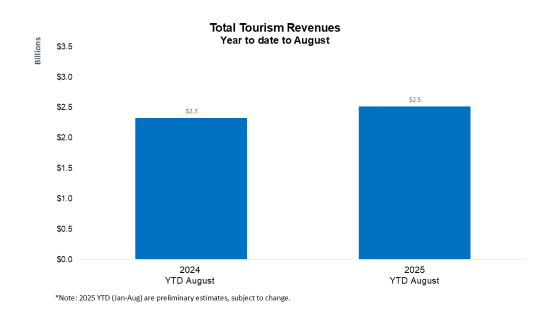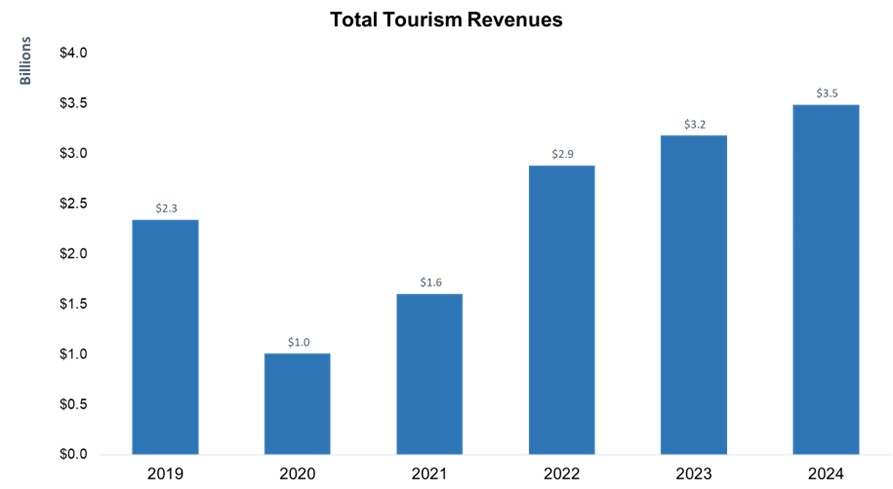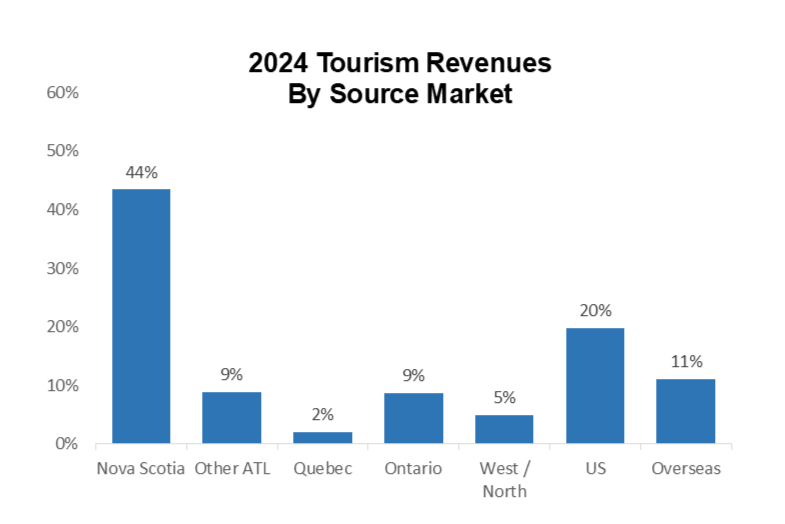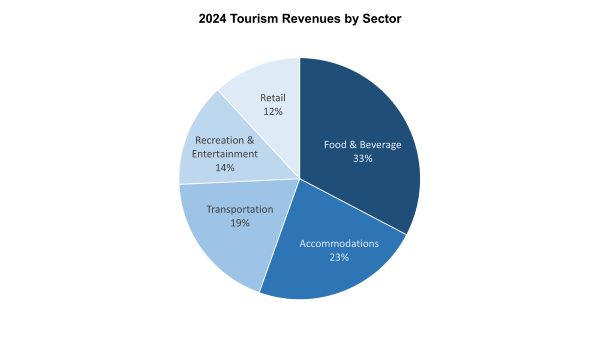Tourism Nova Scotia produces annual estimates of tourism revenues, which are updated as new information becomes available.
Tourism revenues are a measure of the economic impact of tourism. They include all tourism-related spending within Nova Scotia by non-resident visitors and Nova Scotians travelling within the province. Spending includes categories such as accommodations, transportation, food and beverage, cultural services, recreation and entertainment, and travel agency and other reservation services.
Estimated spend data is derived from Destination Canada's Lodging Aligned Spend Reporting (LASR). Use, distribution, or republication of these estimates requires Destination Canada's written consent.
More information on LASR can be found here: https://www.tourismdatacollective.ca/lodging-aligned-spend-reporting.
Click the links below to read more about tourism revenues in Nova Scotia.
Tourism activity in Nova Scotia generated revenues of $2.5 billion year to date as of August 2025, up 8%, from $2.3 billion for the same period in 2024.

Tourism is a significant economic activity in Nova Scotia. In 2019, the last year before the COVID-19 pandemic, tourism activity in Nova Scotia generated $2.3 billion in tourism spending in Nova Scotia. Since 2022, revenues have steadily increased year-over-year, reaching $3.5 billion in total tourism spending in 2024. It should be noted that tourism revenues have increased at a much greater rate than visitation, due to inflation.

Resident vs Non-resident Tourism Revenues Overall & by Source Market
Travel by Nova Scotians within the province is critical to the provincial tourism economy, with spending by Nova Scotians accounting for 44% of total tourism spending in 2024.
Visitors from the rest of Canada account for 25% of tourism revenues, with the Atlantic provinces and Ontario each providing 9% of tourism revenues. Visitors from the United States (note: this includes non-resident overnight visitors as well as cruise visitors from the US) account for 20% of overall tourism revenues, while overseas visitors generate 11% of tourism revenues.

Tourism spending benefits many different types of businesses in Nova Scotia. Food & beverage is the largest category, representing one-third of all tourism revenues, followed by accommodations, and transportation.

In 2024, the Halifax Metro tourism region accounted for 39% of tourism revenues, followed by Bay of Fundy & Annapolis Valley. These two regions account for 62% of the province’s tourism revenues.